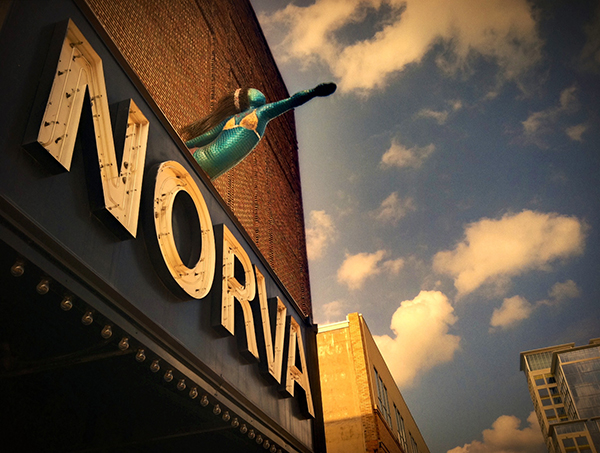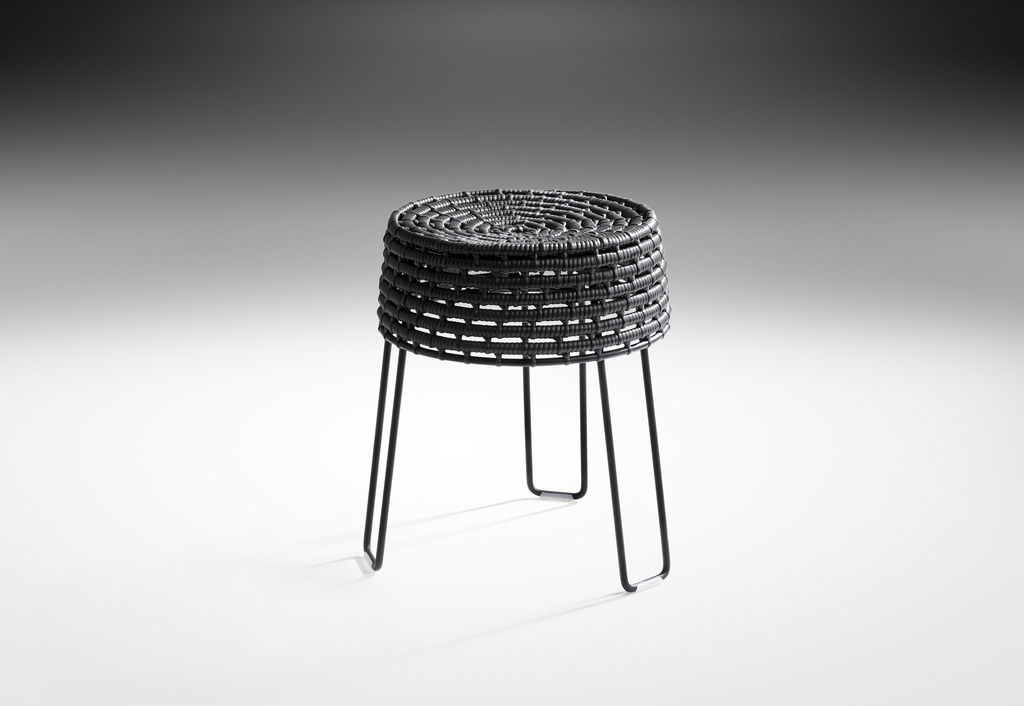The Firestation Centre Launches Its Neo-Ticketing Project
With its new project named Neo-Ticketing, The Firestation Centre for Arts & Culture wants to find out if it will sell more tickets, if guests will get better deals, and if artists will earn more.
The project recently received a £122,877 (US$198,701) grant by the Digital R&D Fund for the Arts for development and implementation.
“You’ve probably come across something a bit like this before, maybe buying airline tickets, or if you’re a bit global—baseball tickets,” the Windsor, England-based venue wrote on its website. “Easyjet, for example, make a number of tickets available at very low prices early to stimulate sales or reward advance purchase customers, whilst letting the price rise steadily over time. Their prices also change according to levels of demand or time of year.”
Firestation will experiment in three ways: rising prices, moving prices, and random price crash.
Rising Prices
“The price of your ticket will start very low, as much as 50 percent lower than we would normally charge, and increase slowly over time to a maximum of 50 percent more than we would normally charge. So the earlier you buy your ticket, the better deal you get.”
Moving Prices
“The price goes up AND down right up until the event, depending on how many tickets are sold and how quickly you’re buying them. So if the price is higher than you expected, you can always check back tomorrow.”
Random Price Crash
“Every now and then, perhaps to stimulate interest, perhaps to reward you for following us on Facebook or Twitter, perhaps just for fun on a Friday night, we’ll crash the price right down and see what happens. So if you hear us say ‘Tickets for New Years Eve are 10p for the next 10 minutes,’ get in there!”
The project is in partnership with Monad Software (the venue’s box office builder) and the Royal Holloway University of London, whose economics department will create the experiments and analyze the data.
“We’re very excited about Neo-Ticketing and really looking forward to seeing how it works,” the venue wrote. “We have a Tumblr blog at neoticketing.tumblr.com where we’ll post loads of updates and project news. Plus, we’d love to hear what you think about any of it—did it work for you? Have we missed something? Who else does it?”
AEG Live Acquires Two Historic Virginia Theatres
AEG Live has acquired two historic theatres in Virginia—The National Theatre in Richmond and The NorVa Theatre in Norfolk.
Located in downtown Richmond, The National is an Italian Renaissance-style theatre built in 1923 and was added to the National Register of Historical Places in 2003. The 1,500-capacity venue underwent a full restoration in 2008 at the cost of $15.6 million. Hosting 150 events annually, The National sits blocks away from the campus of Virginia Commonwealth University.
Newly established offices at The NorVa will provide AEG Live a strategically located regional office under the leadership of the prior owners and management with industry veterans, Bill Reid and Rick Mersel. AEG Live’s Mid-Atlantic regional office will serve as a critical component and base of operations for touring and additional venue opportunities.
“We are fortunate to have acquired these two incredible historic and important theatres that will join AEG Live’s portfolio of elite venues,” said Jay Marciano, CEO of AEG Live. “We are also privileged to now have the opportunity to work with Bill Reid and Rick Mersel as part of our AEG Live team. Their experience in the industry and this marketplace in particular will benefit both our organization and the guests who attend events in the theatres.”
Originally opened in 1917 as a vaudeville theatre and later as a movie theatre, The NorVa was fully renovated and restored in 2000. The 1,500-capacity venue is located in downtown Norfolk, Virginia’s second most populated city. Added to the National Register of Historical Places in 2000, the music venue hosts 150 events annually and is consistently ranked as one of the nation’s top concert nightclubs by Pollstar and was recently voted No. 1 “Best Club” in the 2013 Rolling Stone readers’ poll.
“While both Norfolk and Richmond have proven to be active live entertainment markets, our new association with AEG Live will further establish these special theatres as ‘must play’ venues in the region,” said Bill Reid, vice president of AEG Live. “Having the ability to book these venues alongside AEG Live’s other well regarded properties, in addition to taking advantage of AEG Live’s well-established and deep artist relationships, will truly benefit all of our guests.”
(Image: The NorVa Theatre)
More Venues Implementing a Nobel Prize-Winning Invention
Three scientists were awarded the Nobel Prize in Physics for “the invention of efficient blue light-emitting diodes, which has enabled bright and energy-saving white light sources.”
Light-emitting diodes (LED) lamps are one of humanity’s greatest accomplishments (yeah, I said it), and this award is proper recognition for a life-changing invention.
“As about one fourth of world electricity consumption is used for lighting purposes, the LEDs contribute to saving the Earth’s resources,” the Royal Swedish Academy of Sciences wrote in the award’s press release. “Materials consumption is also diminished as LEDs last up to 100,000 hours, compared to 1,000 for incandescent bulbs and 10,000 hours for fluorescent lights. The LED lamp holds great promise for increasing the quality of life for over 1.5 billion people around the world who lack access to electricity grids: due to low power requirements it can be powered by cheap local solar power. The invention of the blue LED is just twenty years old, but it has already contributed to create white light in an entirely new manner to the benefit of us all.”
One environment that can benefit from the use of LED lambs is the sports venue, which has for years used traditional medal halide lights to illuminate a surface. However, some stadiums and arenas are looking at LEDs in order to save revenue and energy costs.
“These LED lights will outlast the rest of the building,” IAVM member Dave Olsen, executive vice president and general manager of PNC Arena (Raleigh, North Carolina), recently told The Washington Post. “We’ll get a solid 20-plus years of life without having to do any maintenance to them at all. That’s the real key, I don’t have to relamp every three to five years.”
Check out the rest of the Post‘s story to learn more about how other stadiums—such as NRG Stadium in Houston and University of Phoenix Stadium—are using LED lights to help the bottom light and to, ultimately, create a better fan experience.
Anaheim Convention Center Installs Solar Panel System
Congratulations to the Anaheim Convention Center. The venue recently completed a 2.4-megawatt install solar panel system, covering 300,000 square feet on the rooftop of exhibit halls A, B, and C. The $5.7 million project features 7,908 solar panels, making it the largest city-owned, convention center, roof-mounted system in North America.
“The City of Anaheim has always sought to take the lead with projects that demonstrate government entrepreneurship and this partnership reflects the success of this effort,” said IAVM member Tom Morton, executive director of the City of Anaheim’s Convention, Sports & Entertainment Department. “We appreciate the partnership with our public utilities and welcomed this opportunity, which benefits not only our residents, but further enhances the convention center’s sustainability program.”
The system will generate an estimated 3.6 million kilowatt-hours of electricity annually, and the Anaheim Public Utilities is rolling the project into its renewable energy portfolio.
“Installing solar on the convention center furthers the city’s commitment to renewable energy initiatives,” said Dukku Lee, general manager of Anaheim Public Utilities. “The city was able to add a cost-effective renewable resource that utilizes the abundant sunlight we are fortunate to have in this region.”
Borrego Solar designed and installed the system.
“Throughout the contract and construction process, we witnessed firsthand the commitment and enthusiasm of the city, utility, and convention center leaders to ensure the success and quick development of this project,” said Mike Hall, CEO of Borrego Solar. “It’s communities like Anaheim that will enable California to meet its renewable energy mandates and continue leading the way on clean energy deployment.”
(Image: Borrego Solar)
New Study Shows How Leaders Can Be Made
It’s a common belief that leaders are born, not made. However, researchers at the University of Illinois don’t think so.
Professors Kari Keating, David Rosch, and Lisa Burgoon believe that leadership can be taught, and it follows a certain progression.
“In only 15 weeks in our introductory class, students reported significant gains in three important components of leadership: self-efficacy, or confidence in their ability to lead; skills; and motivation to lead,” said Keating, who teachers leadership courses in the College of Agricultural, Consumer and Environmental Sciences’ agricultural leadership education major.
Rosch suggests that science is involved in leadership training.
“It’s a three-legged stool: we call it being ready, willing, and able,” Rosch said. “Students first become ready to learn about being a leader; then they become willing to learn the skills necessary to practice leadership; and finally they’re able to lead because they have the skills and the motivation to do it. You can’t really move on to the other legs of the stool until you’ve achieved a certain amount of this readiness.”
Rosch compares the progression to math.
“You’re not ready to do calculus if you don’t know the basics of algebra,” he said. “This shows us we need to work on readiness so students can make the most of advanced leadership courses.”
Leadership development, though, is not a solitary endeavor.
“The definition we use in the course is that leadership is an individual influencing a group of people toward a common goal,” Rosch said. “So how do you influence people? You can lead through your interactions, your relationships, your communication, the way you express thanks, your ethics.”
The study highlights two implications.
“First, students who choose to enroll in elective leadership courses may not all be similar on incoming measures of confidence and motivation to lead,” the professors wrote in the study. “Leadership educators should therefore consider nuanced methods for providing individual students appropriate degrees of challenge and support for their leadership development. Early-semester assignments asking students to reflect on their own personal journey to become the leaders they are today allows both high-capacity and low-capacity students the chance to consciously focus on their incoming status and instructors to assess their class and plan accordingly. Second, practitioners should focus on the developmental sequencing of their programs and how they administer the ‘pipeline’ of students who progress through them.”
(Story quotes: Phyllis Picklesimer. Photo credit: HALDANE MARTIN via photopin cc)
Do you want to receive a Front Row News weekly digest?
Categories
- Allied (861)
- Architecture (147)
- Arenas (747)
- Career (897)
- Convention Centers (895)
- Education (623)
- Events (1,544)
- Food & Beverage (193)
- Foundation (113)
- Guest Experience (1,496)
- Industry News (2,270)
- Leadership (1,888)
- Marketing (150)
- Membership (2,000)
- Music (213)
- Performing Arts Centers (454)
- Professional Development (409)
- Research (127)
- Safety & Security (442)
- Sports (763)
- Stadiums (608)
- Student (159)
- Technology (516)
- Ticketing (92)
- Touring (82)
- Trends (364)
- Uncategorized (742)
- Universities (218)
- Video (25)
- Young Professional (198)
Twitter Feed
- Twitter feed loading
Recent Posts
- Seattle Convention Center Announces Strategic Leadership Appointment and Growth Initiatives for 2026
- Peggy Daidakis Humbly Made Convention Center History
- Welcome to Our Newest Members
- New Member Benefit! IAVM Partners with Advantage Training to Elevate Staff Readiness and Guest Experience
- Charlotte Convention Center Welcomes Two New Leaders to its Management Team
Categories
- Allied
- Architecture
- Arenas
- Career
- Convention Centers
- Education
- Events
- Food & Beverage
- Foundation
- Guest Experience
- Industry News
- Leadership
- Marketing
- Membership
- Music
- Performing Arts Centers
- Professional Development
- Research
- Safety & Security
- Sports
- Stadiums
- Student
- Technology
- Ticketing
- Touring
- Trends
- Uncategorized
- Universities
- Video
- Young Professional
Archives
- December 2025
- November 2025
- October 2025
- September 2025
- August 2025
- July 2025
- June 2025
- May 2025
- April 2025
- March 2025
- February 2025
- January 2025
- December 2024
- November 2024
- October 2024
- September 2024
- August 2024
- July 2024
- June 2024
- May 2024
- April 2024
- March 2024
- February 2024
- January 2024
- December 2023
- November 2023
- October 2023
- September 2023
- August 2023
- July 2023
- June 2023
- May 2023
- April 2023
- March 2023
- February 2023
- January 2023
- December 2022
- November 2022
- October 2022
- September 2022
- August 2022
- July 2022
- June 2022
- May 2022
- April 2022
- March 2022
- February 2022
- January 2022
- December 2021
- November 2021
- October 2021
- September 2021
- August 2021
- July 2021
- June 2021
- May 2021
- April 2021
- March 2021
- February 2021
- January 2021
- December 2020
- November 2020
- October 2020
- September 2020
- August 2020
- July 2020
- June 2020
- May 2020
- April 2020
- March 2020
- February 2020
- January 2020
- December 2019
- November 2019
- October 2019
- September 2019
- August 2019
- July 2019
- June 2019
- May 2019
- April 2019
- March 2019
- February 2019
- January 2019
- December 2018
- November 2018
- October 2018
- September 2018
- August 2018
- July 2018
- June 2018
- May 2018
- April 2018
- March 2018
- February 2018
- January 2018
- December 2017
- November 2017
- October 2017
- September 2017
- August 2017
- July 2017
- June 2017
- May 2017
- April 2017
- March 2017
- February 2017
- January 2017
- December 2016
- November 2016
- October 2016
- September 2016
- August 2016
- July 2016
- June 2016
- May 2016
- April 2016
- March 2016
- February 2016
- January 2016
- December 2015
- November 2015
- October 2015
- September 2015
- August 2015
- July 2015
- June 2015
- May 2015
- April 2015
- March 2015
- February 2015
- January 2015
- December 2014
- November 2014
- October 2014
- September 2014
- August 2014
- July 2014
- June 2014
- May 2014
- April 2014
- March 2014
- February 2014
- January 2014
- December 2013
- November 2013
- October 2013
- September 2013
- August 2013
- July 2013
- June 2013
- May 2013
- April 2013
- March 2013
- February 2013
- January 2013
- May 2012
- March 2012
- December 2011
- November 2011
- October 2011
Recent Comments
- Frank Bradshaw, Ph.D., CVE on John Meyer, CVE, a Tireless Advocate of Certification for Venue Professionals, Has Died
- Neil Sulkes on Hilary Hartung, Friend to Many in Venue Marketing, Has Left Us
- Jason Parker, CVE on The Devastation of Hurricane Helene and How We Can Support One Another
- Larry Perkins on Touhey Testifies Against Speculative Ticketing Before Congressional Subcommittee
- Peter Secord on Major Players for Planned Elkhart Amphitheater Were in the Mix at VenueConnect





